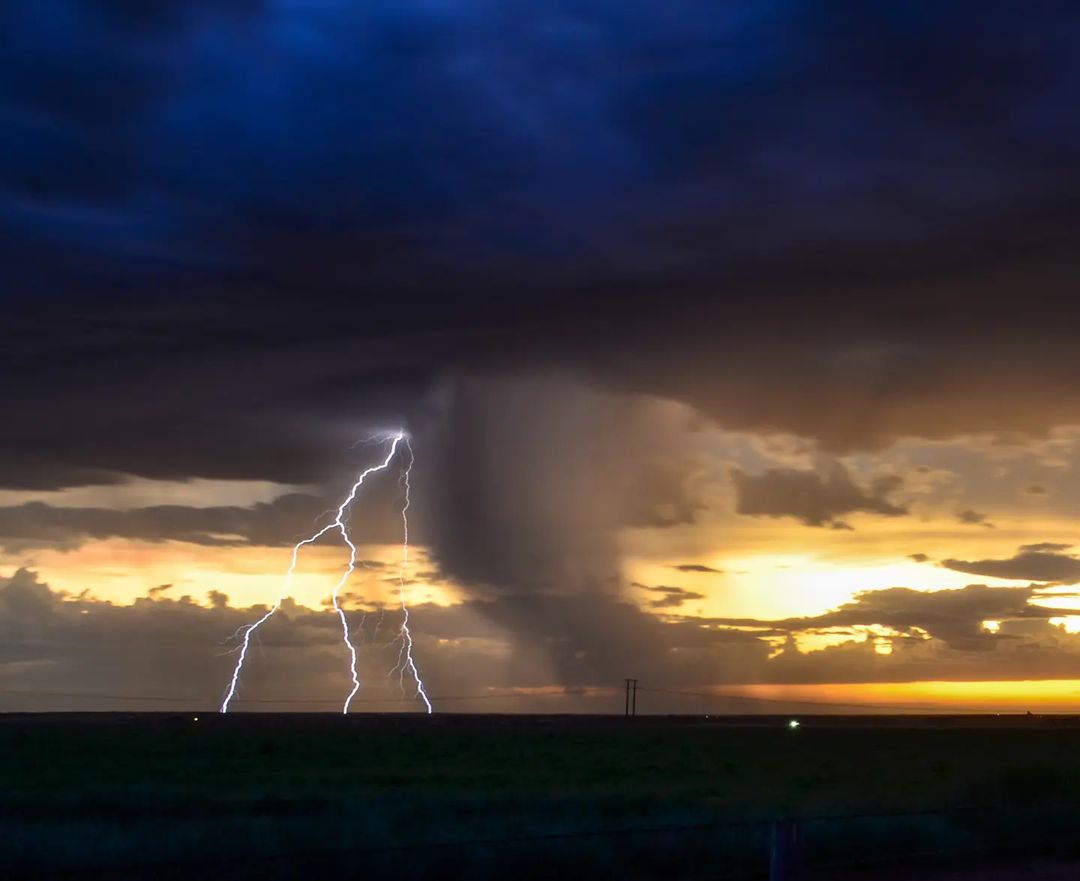Australia just endured a weekend of prolific thunderstorm activity, with more 4.2 million lightning strikes detected across the country on Saturday and Sunday.
A perfect mix of thunderstorm-producing ingredients lined up over Australia on the weekend:
- A cold pool of air swept across southern Australia with the passage of a cut-off upper-level low
- This cold air clashed with a much warmer and moisture-laden air mass sitting over the Australian continent
- These contrasting air masses caused the atmosphere to become very unstable and allowed a powerful stream of upper-level winds to develop over Australia
- A series of surface-based low pressure troughs provided the trigger mechanisms for widespread thunderstorms to develop
The animation below shows the weekend’s thunderstorm activity over Australia, with lightning affecting part of every state and territory. Storms were active during both day and night and occurred from the NT’s Top End all the way down to Tasmania.
Video: Composite satellite, radar and lightning strike observations over Australia on the weekend, covering the period during the 48 hours ending at midnight on Sunday night, November 13, 2022.
One of the weekend’s most impressive thunderstorm complexes was a line of storms that hit Adelaide on Saturday afternoon as a damaging squall line before tracking across SA and NSW to reach Sydney late on Sunday morning. This storm caused widespread damage in SA and contributed to the state’s biggest power network outage since 2016. As of 7am on Monday, 35,000 customers in SA were still without power.

Image: One of the weekend’s lightning strikes over Pinkertons Plains in SA on Saturday. Source: @stumilde_photography / Instagram
Weatherzone’s Total Lightning Network detected just over 4,213,700 lightning strikes over Australia on the weekend. This was an incredibly active 48 hours of thunderstorm activity in Australia, even for late-spring, which is a notoriously stormy time of year across the country.
This article was originally posted on Weatherzone and has been republished here with permission.
About our Guest Author
 |
Ben Domensino is a Communications Meteorologist at Weatherzone.
Weatherzone, a DTN company, is Australia’s largest private weather service and was established in 1998. Their team of highly qualified meteorologists understands the effect the weather has on the day to day operations of businesses of all kinds. They also run Australia’s most popular consumer weather website and mobile app. Weatherzone provides market-leading weather insights to more than five million Australians and over 15 industries, including energy, mining, agriculture, ports, aviation, retail, insurance, broadcast media and digital media. You can find Weatherzone and Ben Domensino on LinkedIn. |


Leave a comment